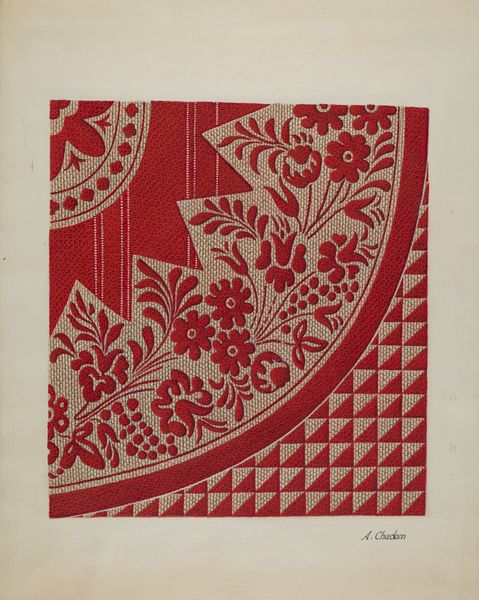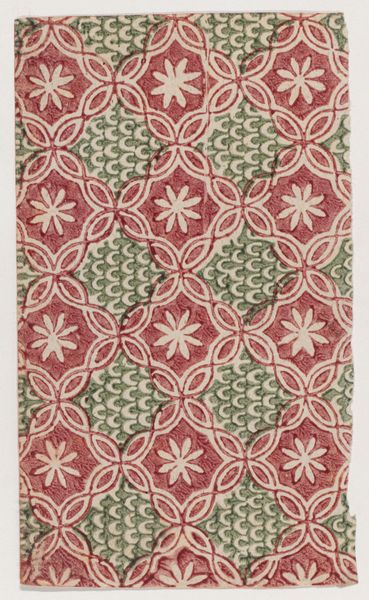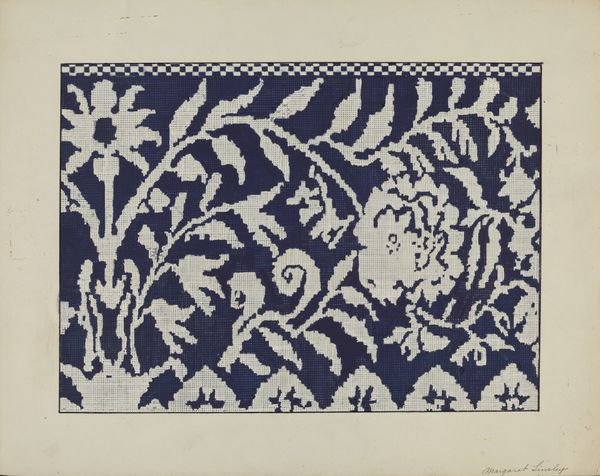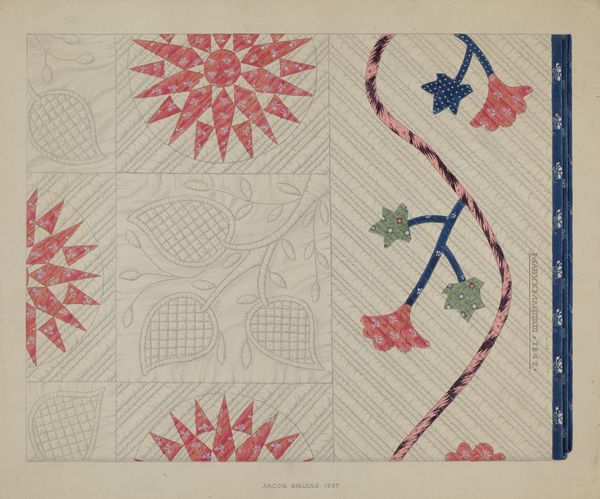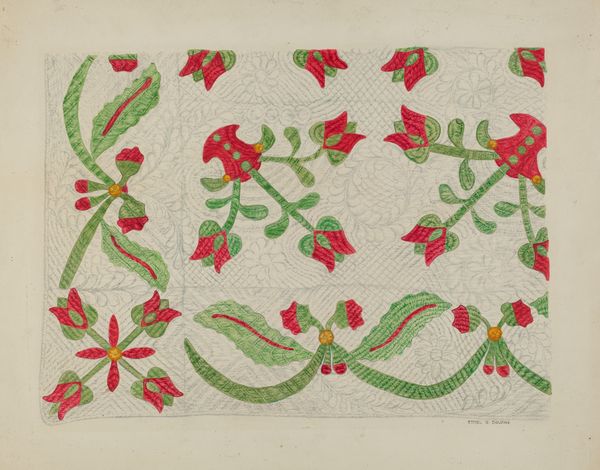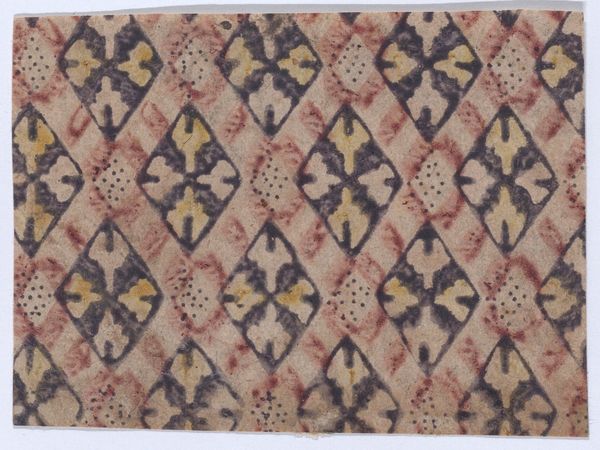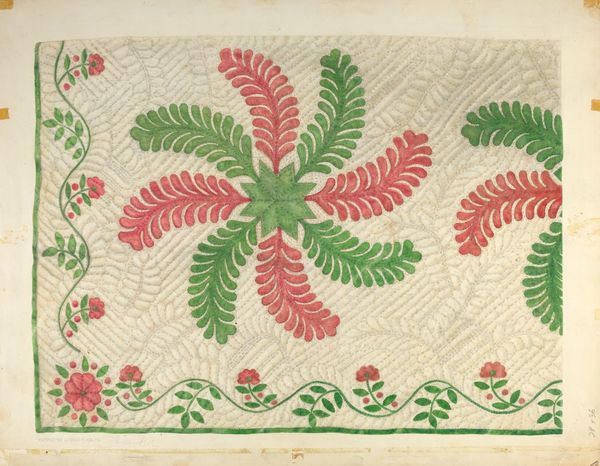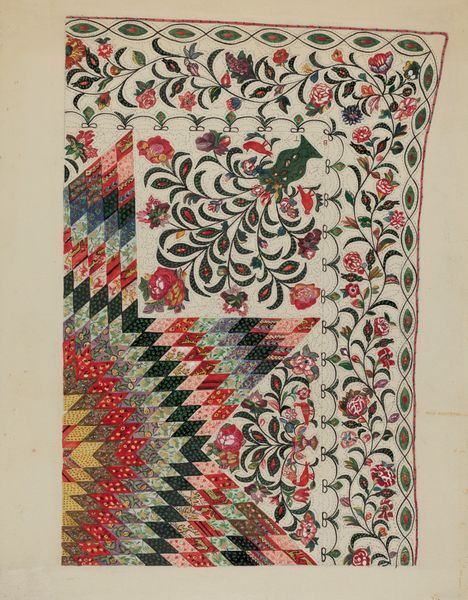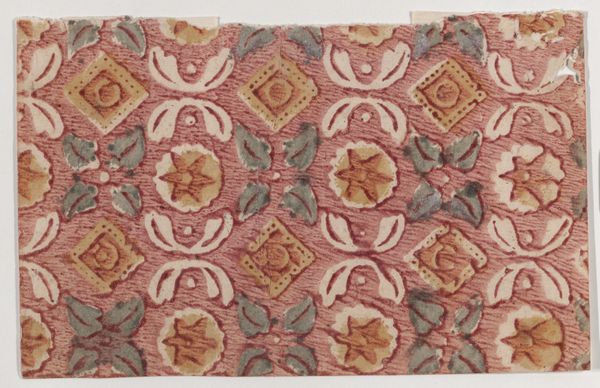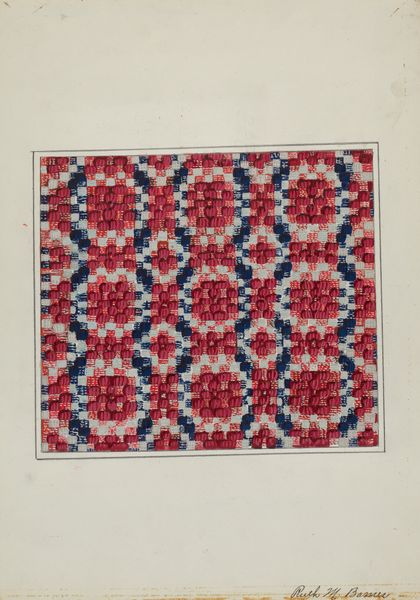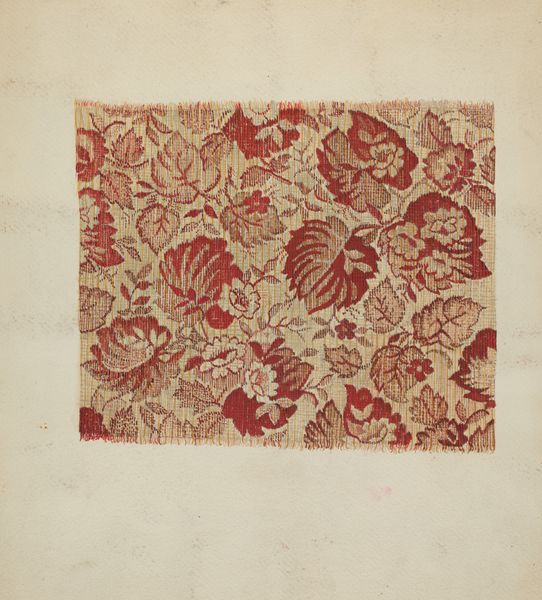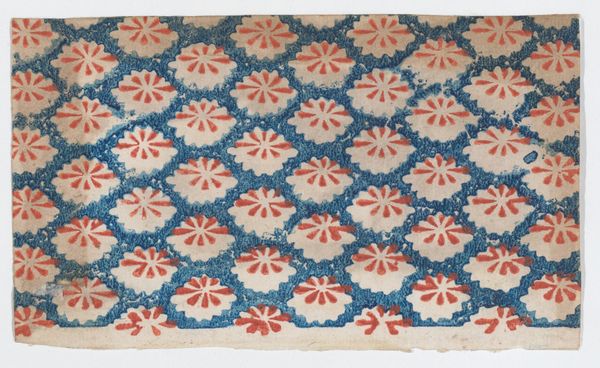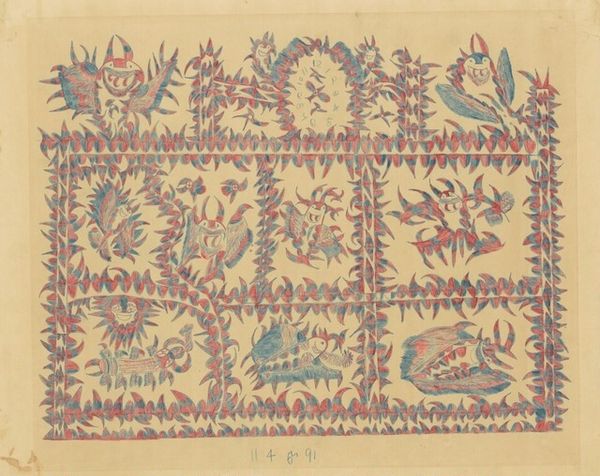
textile
#
textile
#
geometric pattern
#
folk-art
#
geometric
#
textile design
Dimensions: overall: 27.7 x 35.7 cm (10 7/8 x 14 1/16 in.)
Copyright: National Gallery of Art: CC0 1.0
Editor: This is Margaret Linsley's Applique Quilt, made around 1936. It appears to be a drawing of a quilt design, dominated by red and white geometric patterns. There's something comforting, yet almost rigidly formal about it. How do you interpret this work? Curator: For me, this quilt design embodies a fascinating tension between domesticity and radical geometric abstraction. Quilts have traditionally been seen as 'women's work', a craft often undervalued and relegated to the private sphere. Editor: Right, I can see that. Curator: However, within this seemingly traditional medium, Linsley explores geometric abstraction – a style largely dominated by male artists in the early 20th century. Look at the interlocking shapes, the repetition, and the almost mathematical precision. Do you see echoes of the Bauhaus movement here, perhaps even a commentary on the societal restrictions placed on women artists during this period? Editor: That's a perspective I hadn't considered. The way the geometric shapes almost fight with the homey fabric makes more sense now. So, is it a conscious subversion, maybe? Curator: Precisely. It invites us to question the boundaries between craft and art, masculine and feminine, public and private. The "Applique Quilt" becomes a quiet, but powerful statement on gender and creativity within the domestic sphere. Editor: This really opens my eyes to seeing beyond the surface pattern and considering the social and historical implications woven into the design. Curator: Exactly! And perhaps we should rethink these works as valid interventions within established historical and cultural structures.
Comments
No comments
Be the first to comment and join the conversation on the ultimate creative platform.
